Heated Gutter Services throughout Freehold and the surrounding areas
Using Heat Tape To Create A Heated Gutter
In winter weather, a heated gutter system helps to stop snow and ice build-up. It consists of heat tape threaded into the gutters, downspouts and underneath the gutter guard system.
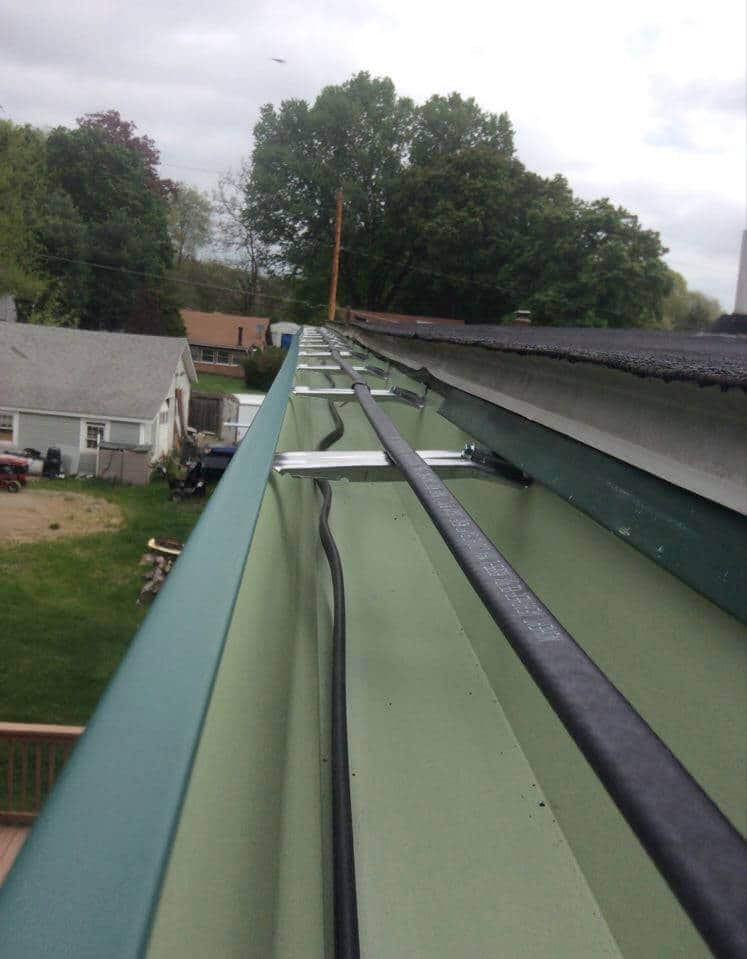
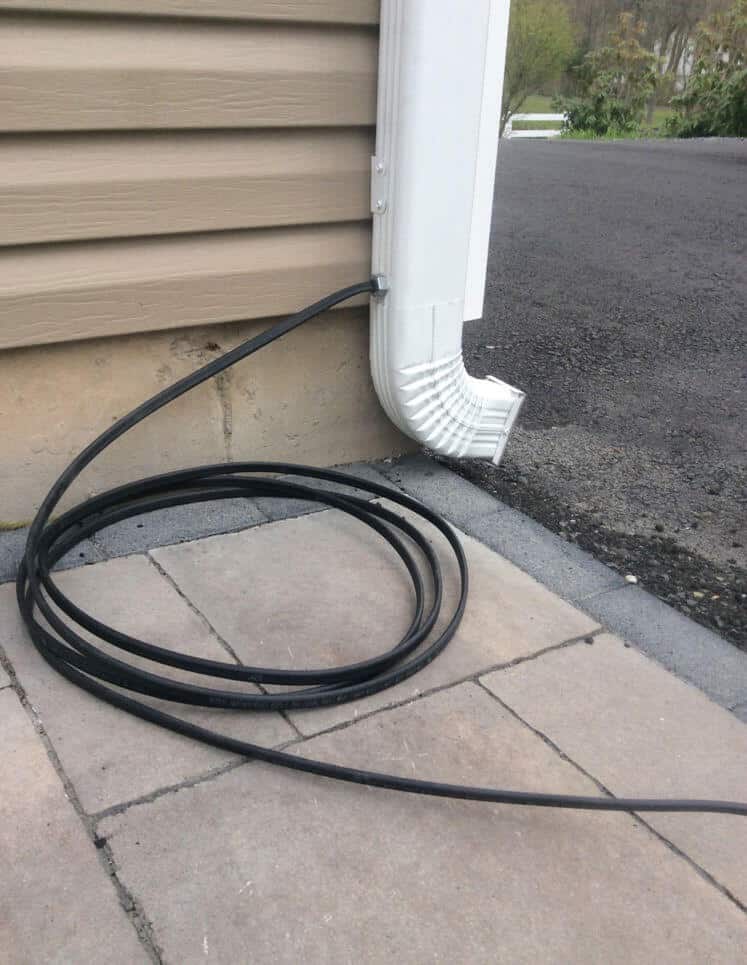
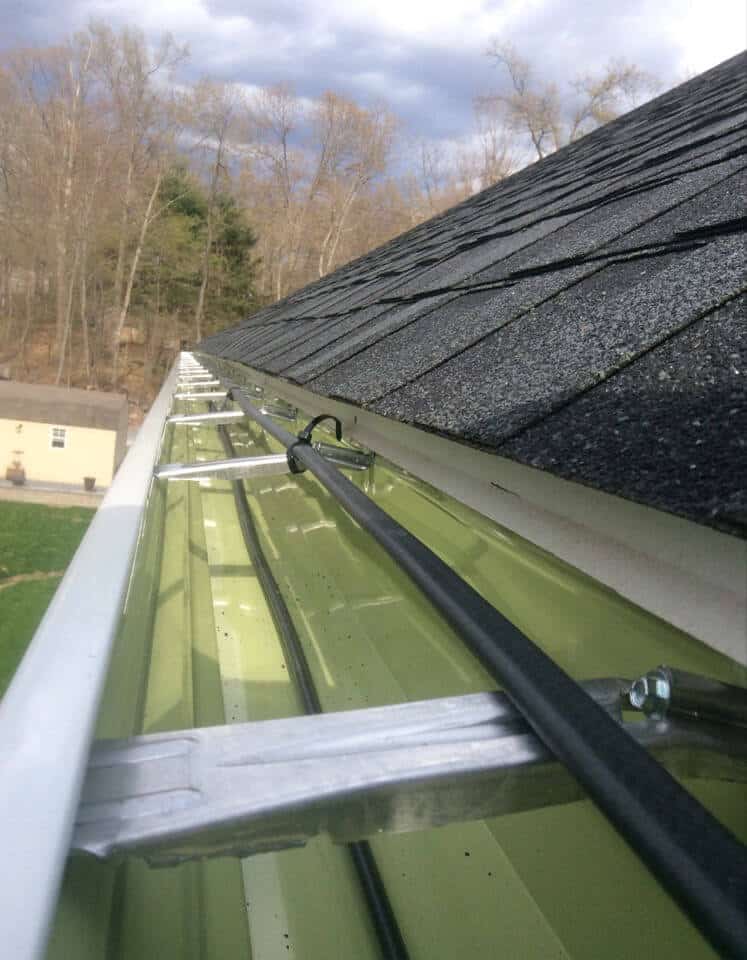
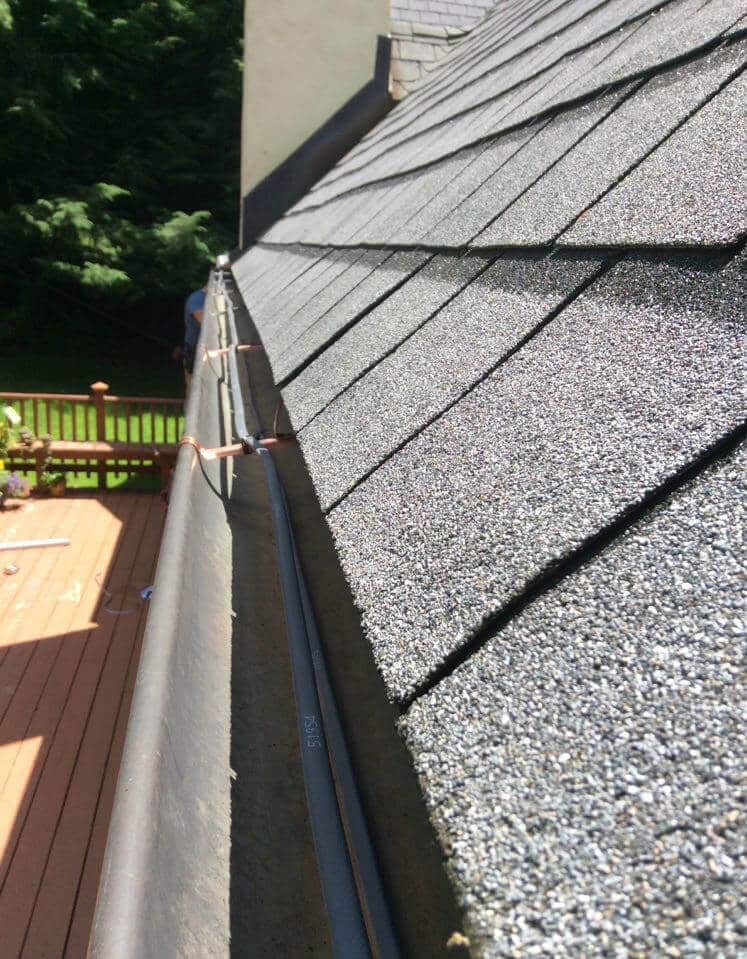
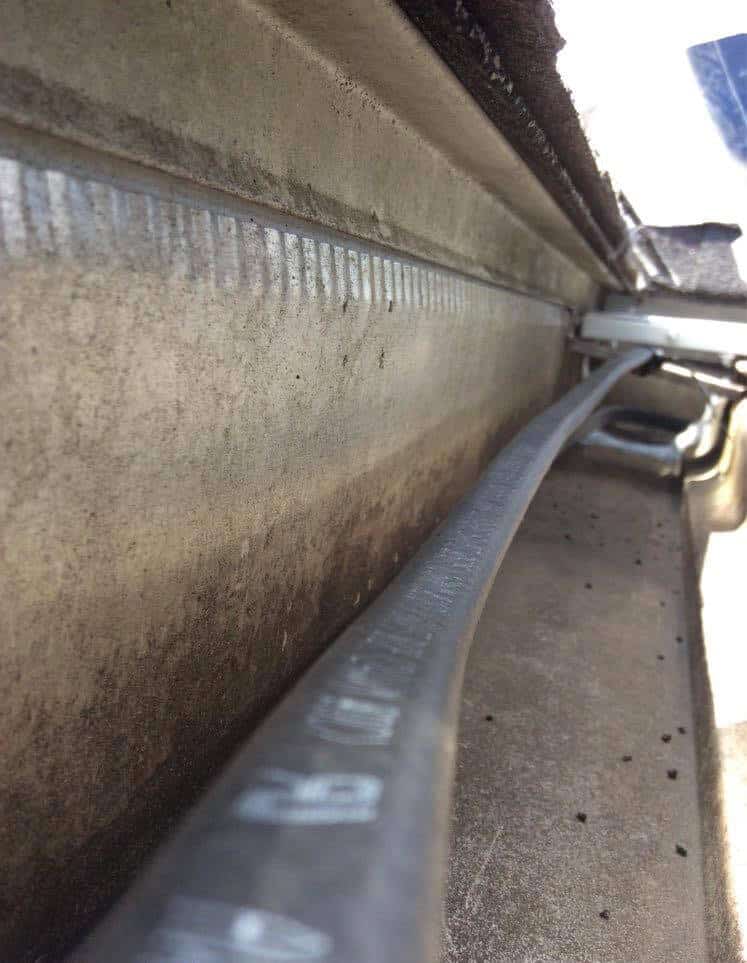
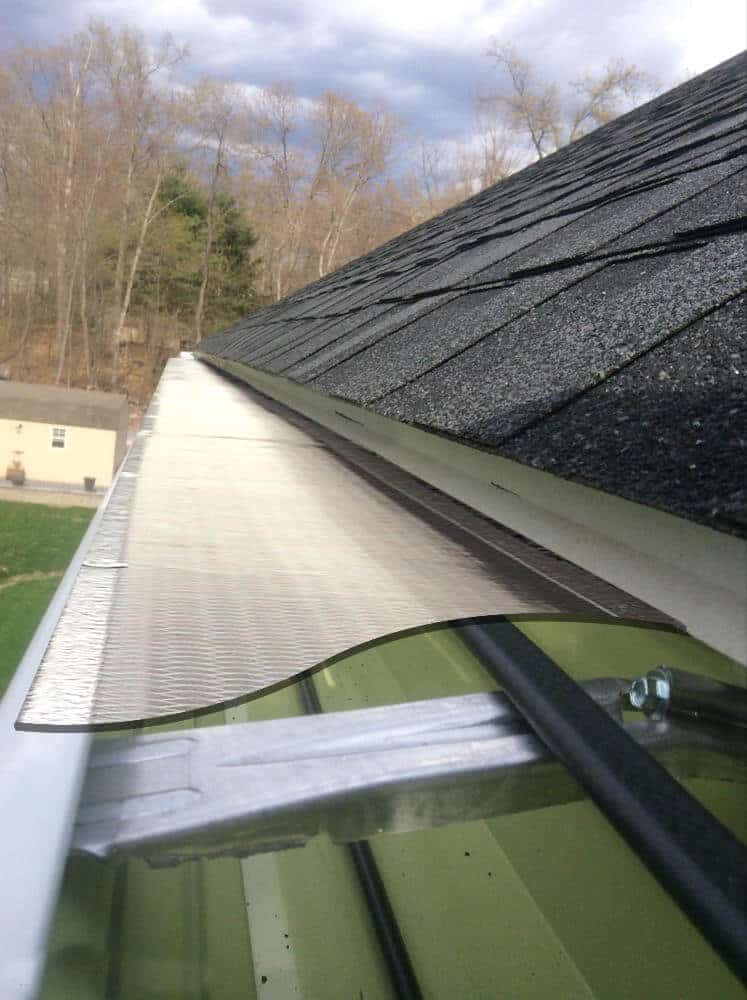
TABLE OF CONTENTS
What about Heat Tape on the Roof?
Heat Tape works better inside a Gutter System.
Why Gutter Guards are an important part of a Heated Gutter System.
Are Heated Gutters Safe? What about potential fire hazards?
Why Heated Gutters?
For homeowners living in colder climates, that have to manage snow and ice buildup on roofs, the worry of ice dams leading to water damage can be a huge source of anxiety. This kind of damage can easily turn into a home repair nightmare.
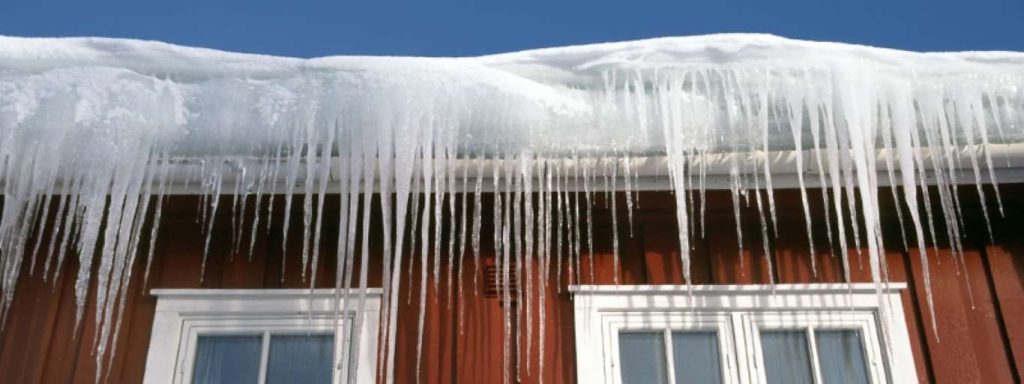
Excessive ice damming caused by harsh winters can inflict significant damage to homes, resulting in high repair costs.
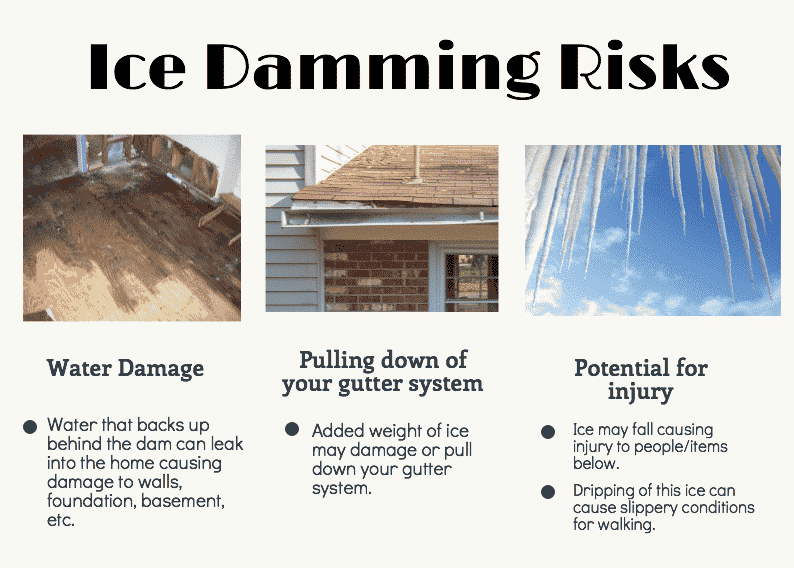
During the winter months, large icicles on the roof can be a danger, posing risks to walkways and driveways. In severe cases, snow and ice builds up, putting too much pressure on gutters and potentially causing them to separate from the house, crack or even collapse.
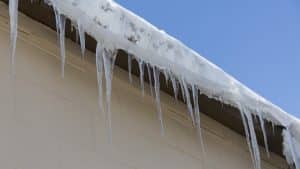
One of the best ways to add peace of mind and prevent ice dams is to have heat tape added to your gutters. Heat tape is a cable that heats up enough to melt snow and ice, but not enough to cause damage to your home.
What about Heat Tape on the Roof?
We use heated gutter cables, sometimes called heat tape, inside the gutters and downspouts rather than lying atop or snaking along the roof’s edge like traditional roof heat cable does.
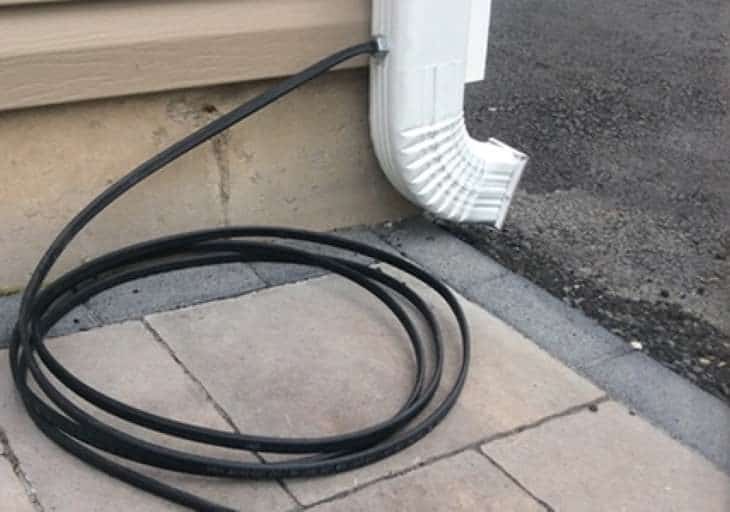
By combining heated gutters and heated gutter guards, problems with roof heat tape or heat cable can be minimized.
Is it worthwhile to install heat tape? That depends on proper installation.
One of the most common ways to install heat cables is the zigzag pattern. This results in a triangle-shaped outline on the first 3ft of the roof, followed by lining the cable inside of the gutter and downspout.
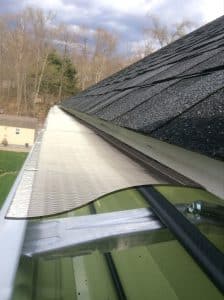
By using Heat Tape on the roof, you can melt snow and ice, however it will not be able to stop ice from building up in your gutters due to a restricted water flow.
Moreover, this technique has been found to cause more harm to the roof than not having a cable at all over time and could void your roof’s warranty.
Gutter Systems benefit from the use of Heat Tape.
We only implement Weather-Ready heat cables inside of gutters and downspouts so that the shingles are unaffected, the wires are guarded, and just the gutters receive heat. This strategy is not simply highly effective, but also aesthetically pleasing. With the gutter cover in place, it catches all of the warmth from the heat tape within, allowing your entire gutter structure to remain warm. Hence, when snow on the roof begins to thaw out, it will hit a cozy gutter guard and a cozy gutter, avoiding ice and snow from gathering in your drainage system. This enables your gutters to deal just with liquid, not ice. It is critical that the heat cable be switched on mere moments before snowfall for maximum efficacy. Find out more about how heat cables work.
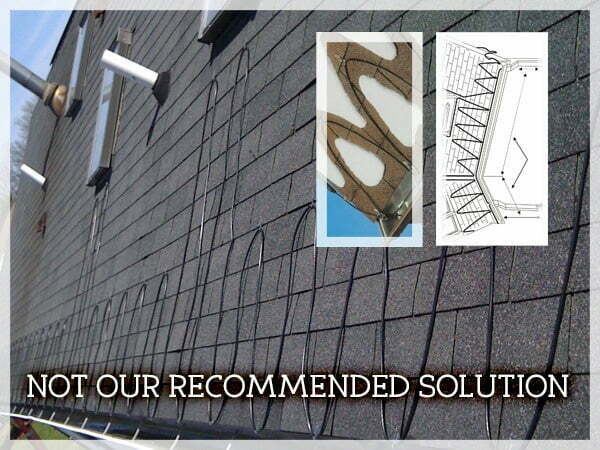
Heated cable for your gutters is a necessity in areas with very harsh winters, and heavy snowfall —helping to prevent the formation of ice dams and water from entering your home.
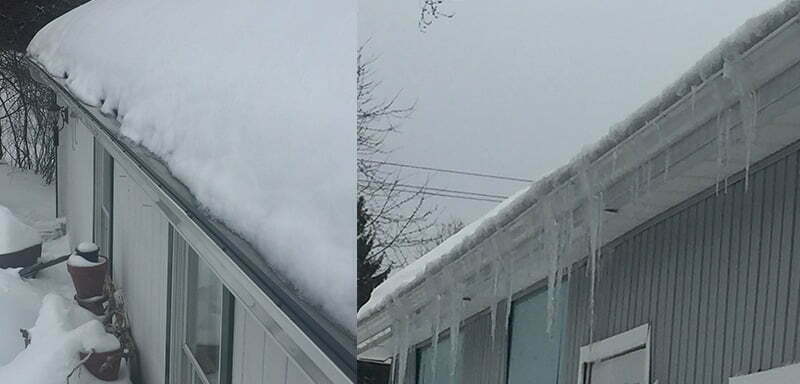
Snow Guards
Not to be confused with Gutter Guards; Snow Guards are another useful addition for roofs in snowy climates. Snow Guards are designed to prevent snow or ice from causing an avalanche off the roof which could cause it to fall onto landscaping or pedestrians below.
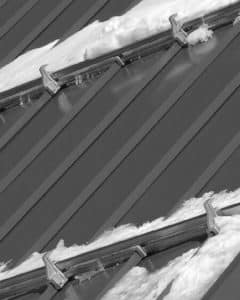
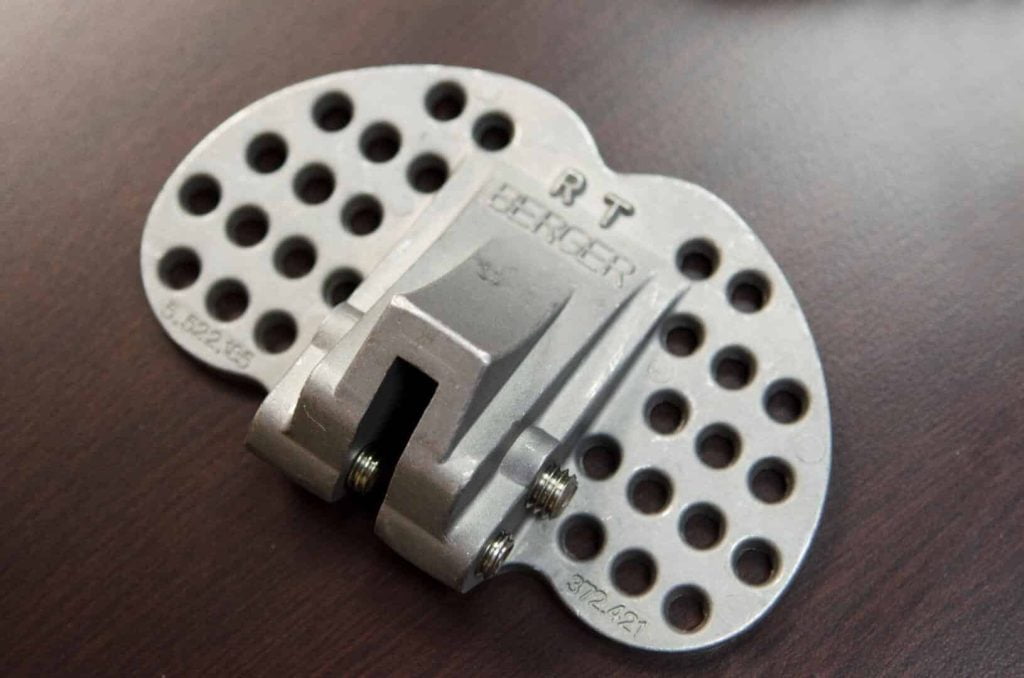
Ice Dams
The most common cause of ice dams is uneven or inadequate roof insulation or other causes of temperature fluctuations that allow the snow to melt and run down the roof —refreezing when it hits the colder part of the roof over the eaves. Ice builds up at the roof’s edge or gutters, trapping additional ice and water above it which begins to back up under the shingles above —allowing water to enter your attic, ceilings, and interior walls. Water damage in your home can lead to expensive repairs and possibly mold remediation.
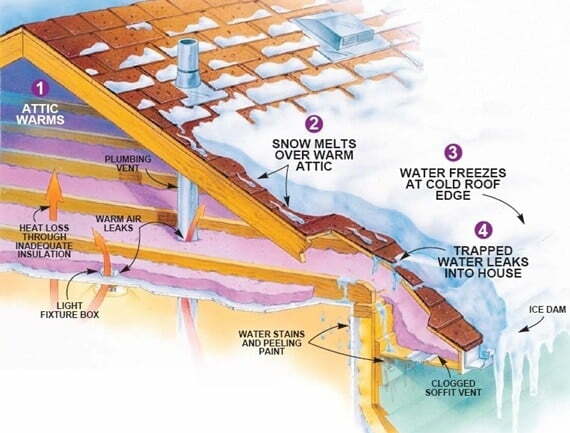
What Causes Ice Damming?
There are a variety of reasons behind this problem. The most common reasons for ice damming are:
- Radiant heat created from sunlight warming roof shingles
- Rapid temperature fluctuations from day to night
- Poor soffit ventilation
- Lack of a ridge vent on the peak of the roof
- Poorly insulated attic space
- Lack of a gutter protection system
The lower the pitch of a roof, the faster ice damming can occur. Many clients experience ice damming near bathroom vents and chimneys because of the changes in temperature.
With a traditional roof heat cable, not only is the cable exposed on top of the roof, but ice can still occur above the heat tape —moving the problem further up on the roof where you don’t have the advantage of your roofs drip edge and ice/water shield. Where the heat tape does melt the snow, it can allow water from the melted ice to refreeze as it travels further down to the gutter. Gutters are usually colder than the roof because they are surrounded by cold air. The gutter heat tape in a heated gutter system warms the entire gutter system and eliminates this problem.
Without a heated gutter, ice tends to accumulate in the gutters first leading many people to ask Do Gutters Cause Ice Dams?
Why Gutter Guards are an important part of a Heated Gutter System.
Although gutter guards are designed to keep leaves and debris from clogging your gutter, they also strengthen the gutter, help protect the heat cable, and keep snow out of your gutter so it melts faster. Having the heat tape inside the gutter allows the entire gutter system to warm up, melting snow as it falls and preventing the ice buildup that can lead to water in your home or large icicles that hang from your roof or gutters. Leaving the heat cable exposed to the elements can lead to the cable becoming damaged and leaves and debris getting caught on the cable.
Are Heated Gutters Safe? What about potential fire hazards?
The Nuheat Weather-Ready heat tape that The Brothers that just do Gutters install has a UV-resistant polyolefin outer jacket, tinned copper braided layer, and a fire-resistant conductive core. Nuheat industries also require equipment ground-fault protection on each heating cable circuit in order to further reduce the danger of fire caused by continuous electrical arcing as a result of improper installation or damage to the heating cable. In some cases, a licensed electrician will need to make a final connection. Installing the heat cable directly on the roof’s surface can be a potential fire hazard.
How much electricity does it use?
Your actual electrical usage will vary depending on the length of the cable run. Additionally, The Nuheat Weather-Ready heat tape self-regulates its power output in response to changes in the ambient conditions. The power output will increase as ambient temperature decreases in the presence of ice or snowfall. As this water and ice temperature rises, the heat tape uses less wattage and emits less heat. You can find more details on our Cost of Heated Gutter Systems blog post as well as our Top 5 FAQ’s about Heated Gutters.
Heated Gutter Demonstration
We put together a video demonstration of how a heated gutter system works. We placed piles of snow on top of the gutters so that viewers can see them melt through a time-lapse video.
For best results, your heat cable should be turned on prior to the snowstorm… so that the heated gutter will melt the snowflakes as they land. Once there is an accumulation of ice or snow, it will melt but takes more time and energy.
Note: For this simulation, we started with a mound of snow already on the gutter; during an actual snowstorm the flakes will melt as they land on the heated gutter. Be sure to visit our many blogs on this topic.
Installing Heat Tape – Using Heat Tape To Create A Heated Gutter
When installing heat tape, there are many things to consider. One aspect to examine is spacing; depending on the pitch of the roof and the length of the soffit.
We install the heated cable into your gutters and downspouts under a gutter guard system. Using this method will help prevent many concerns associated with ice dams.
We typically have to install an exterior outlet in the soffit to plug the heat cable into. We also need to consider the amount of electricity the heated cable will draw. We will often install an extra breaker in the main electrical panel just for the heat tape. Since the heat tape does not stay on all the time, we install a light switch in a convenient location in your home for you to turn the cable on and off as needed. This switch has a red light that glows when the heat cables are engaged. This light helps you be aware that they are working, but also reminds you to turn the heat cable off when you don’t need it on.

